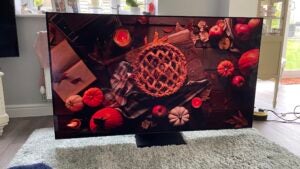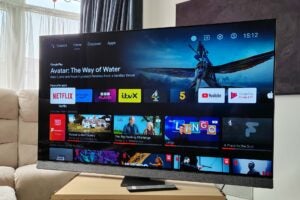Best OLED TV 2024: Six of the best OLED TVs
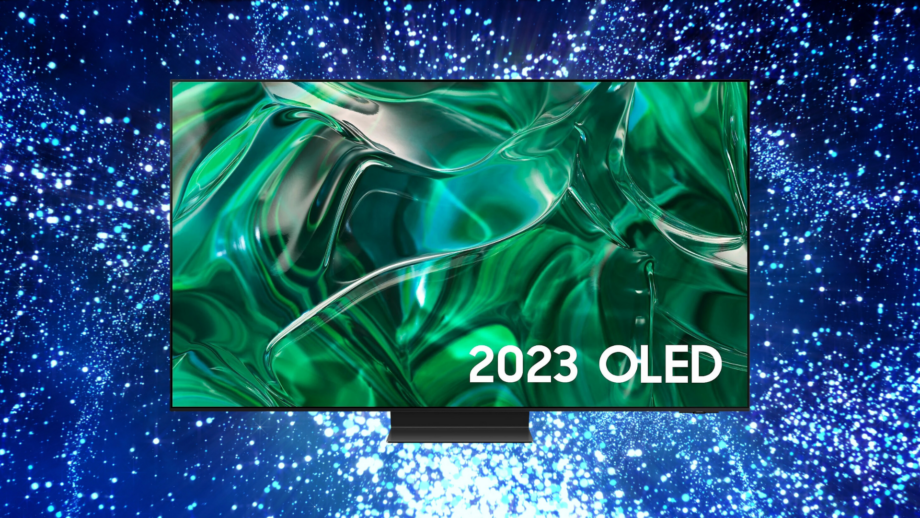
Samsung’s QD-OLED display has added competition, but LG Display’s MLA panel has upped the stakes. Whichever way you want to look at it, the best OLED TVs keep getting brighter and better.
And OLED TVs aren’t just great for films, they make an excellent option for gaming with their fast refresh rates and latency; while their motion skills make them a good option with fast-moving sports such as football.
We make sure to test all these aspects of TVs from measuring their brightness with HDR content, to assessing their colour performance, motion processing, sound quality and smart interface to judge how good they are. If they make it on this list, then we absolutely rate them as one the best you can buy.
If you’re in the market for a new TV, this list is a great place to start in finding the best OLED TV. However, if it’s not an OLED you are after then our Best TV list features a range of different TVs at a range of prices.
Our best 8K TV features TVs on the cutting edge of what’s possible, while our best 4K TV are there for the best HDR models, Also check out our best Cheap TVs if your budget is more modest.
Best OLED TVs at a glance
- Best Samsung OLED TV: Samsung S95C OLED – check price
- Best Panasonic OLED TV: Panasonic TX-65MZ1500 – check price
- Best Sony OLED TV: Sony XR-55A95K – check price
- Best Philips OLED TV: Philips 55OLED+907 – check price
- Best LG OLED TV: LG OLED65G3 – check price
- Best Hisense OLED TV: Hisense 65A9HTUK – check price
How we test
Every TV we review is put through the same set of tests to gauge its picture performance, usability, and smart features.
Tests are carried out over several days and are done by eye but supported with technical measurements. Testing by eye involves an expert watching a wide range of material to understand and determine a TV’s performance in fields such as brightness, contrast, motion processing, colour handling and screen uniformity.
We’ll consider the design of the TV in terms of build quality, study the spec sheets and see if the TV’s connections are up to spec, as well as playing video and audio content to ensure that the set handles playback as it claims. We also take note whether a product’s compatible formats and features are in line with industry trends or not to gauge whether it’s relevant for you.
Comparison to other related and similarly priced products is also important, to see if it’s missing any vital features and whether it impresses as a whole. After all this, we’ll come to a judgement on how the TV performs as a whole.
If you want to learn more, please visit our detailed page about how we test televisions.
- bright, detailed and balanced images
- fine sound
- good upscaling (up to a point)
- Unarguably expensive
- Only incrementally brighter than LG’s brightest OLED
- Bravia Cam seems gimmicky
- Stunning, ground-breaking picture quality
- Gorgeous Infinity One design
- Outstanding gaming support
- No Dolby Vision
- Expensive even by OLED standards
- Smart interface can be unhelpful
- Spectacularly bright HDR image
- Minimalist looks
- Excellent gaming features
- Slick user interface
- Perfunctory Atmos sound
- Ever so slight green tint to pictures
- Stand is optional extra
- Fabulously engaging HDR performance
- Impactful sound system
- Accessible smart interface
- Competitive gaming features
- Currently more expensive than close rivals
- LG better for premium gaming experience
- Limited app selection
- Three-sided Ambilight
- 4K 120HZ support
- Stylish design
- Only two inputs support 120Hz
- Stereophonic sound system
- Bright and colourful images
- Sound system is a blast
- High-end gaming features
- Simple interface
- Well-built
- Only available in 65-inch for UK market
- Picture processing has heavy touch
- Ultra Smooth Motion setting could use some refinement
- Competition is excellent

Panasonic TX-65MZ15000B
Best Panasonic OLED TV
Pros
- Fabulously engaging HDR performance
- Impactful sound system
- Accessible smart interface
- Competitive gaming features
Cons
- Currently more expensive than close rivals
- LG better for premium gaming experience
- Limited app selection
If you knowledgeable about OLED TVs, you may be wondering why we’ve chosen the MZ1500 over Panasonic’s flaship MZ2000. In short, it’s all to do with the sound system.
While the Panasonic MZ2000 is undoubtedly the best overall Panasonic TV, its sound system is bolted on and it’d be pointless to add another sound system to TV. The MZ1500 is a more sensible choice for those who want an excellent 4K HDR picture and can pair it with their own sound system.
It’s a TV that’s easy to assemble, and the swivel screen means you position it to avoid glare or ambient sunlight in a room. The smart interface is Panasonic’s My Home Screen, which has all the main video streaming apps, though it’s rather limited if you’re in need of sports and music apps.
Connectivity includes two HDMI 2.1 ports that support 4K/120Hz gameplay and VRR. We measured input lag at 14.3ms, which is quicker than the Sony A80L but slower than the LG C3 OLED. The Game Control Board brings up a series of settings that can be customised during gameplay for the best gaming performance.
Like Sony’s OLEDs, Panasonic takes a very natural approach to tuning the picture for its TVs. Blacks are rich and deep, the peak brightness is over a 1000 nits, and that’s more than enough to give HDR some punch and wide array of colours.
Highlights (the brightest part of the picture) and rendered bright, the MZ1500 reveals a wider array of colours than the Sony A80L with its bright reds and more nuanced blues. The addition of Dolby Vision IQ and HDR10+ Adaptive also gives it an advantage in both bright and dark rooms, as the TV retails more brightness and detail in the image.
Upscaling is very good, maintaining the look of content without enhancing it, and while this set’s motion processing isn’t as good as Sony, it’s not far behind, smooth and natural look at its ‘Min’ setting.
The sound system produces warm bass with some depth and weight. It sounds a little too warm and wooly with dialogue that results in some lines sounding muffled. That said, we wouldn’t rush out to buy a soundbar but it’s design makes it easier to incorporate one than the MZ2000.
Reviewer: Kob Monney
Full Review: Panasonic MZ1500
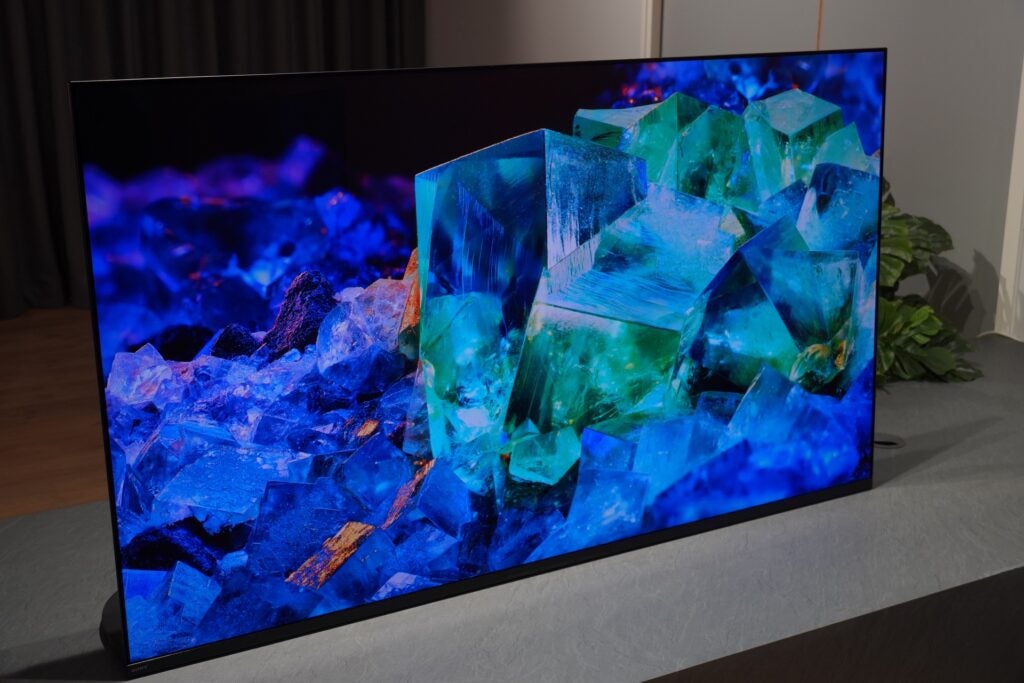
Sony XR-55A95K
Best-Sony OLED TV
Pros
- bright, detailed and balanced images
- fine sound
- good upscaling (up to a point)
Cons
- Unarguably expensive
- Only incrementally brighter than LG’s brightest OLED
- Bravia Cam seems gimmicky
The A95K is a blend TV of OLED and Quantum Dot colour to create a QD-OLED TV that offers the best of both technologies. Priced at $2999 / £2699, the A95K incurs a premium cost over Samsung’s S95B QD-OLED and LG’s G2 OLED, but in our view this TV is one of the best 55-inch TVs available.
The A95K continues Sony’s mission of creating minimalist screens, though the stand is noticeably chunky and might cause issues for some set-ups given its size. It can be placed in two ways, with the rear position ensuring you won’t see it from your viewing position. The grid panel on the rear is just a fetching pattern either, as they can be switched around to conceal cables and cover inputs.
And those inputs cover two HDMI 2.1 inputs with support for eARC, VRR, ALLM, and 4K/120Hz. Compared to the LG C2‘s four HDMI 2.1 and that means if you have a soundbar to plug in then that leaves only one HDMI 2.1 input to use for any other devices. A set of connections you don’t often see are a pair of speaker binding posts if you want the A95K to serve as the centre channel in a (Sony-centric) surround sound system.
Our reviewer didn’t find this was a TV that was geared towards all gamers. If you have a PS5 there’s the Auto Tone Mapping feature that optimises the HDR performance but with no support for AMD FreeSync or Nvidia G-Sync, this wouldn’t be as suited for gamers as either the Philips OLED937 or Panasonic LZ2000. While an input time of 21ms is absolutely fine, the LG C2 can hit 12.9ms for a quicker response time.
We found the TV delivered Sony’s usual level of picture excellence, showcasing superior and natural colour fidelity detail levels to the brightest non-QD OLED screens, with excellent ‘true’ blacks, and the ability to find and reveal all the detail possible for a spectacular looking picture. However, brightness for HDR content is not a huge leap over the LG G2, but enough to have a positive impact.
We were less impressed with how it handled lower resolution content. While HD is handled with confidence, 480p content looks soft and edgy, and not all that pleasant. On more solid footing is the A95K’s motion handling, the TV displayed an unerring confidence and authority in marshalling sports like tennis without smearing or pixelation. It’s a class-leading performance.
Sound quality is big in size and accurate in terms of where effects and dialogue are placed on the screen thanks to the Acoustic Surface Audio+ system that uses actuators to vibrate the screen. This is good enough that you’ll need to spend a fair bit more to really elevate the sound quality on this TV. Look out for a full review of the Sony A95L in February/March.
Reviewer: Simon Lucas
Full Review: Sony XR-55A95K
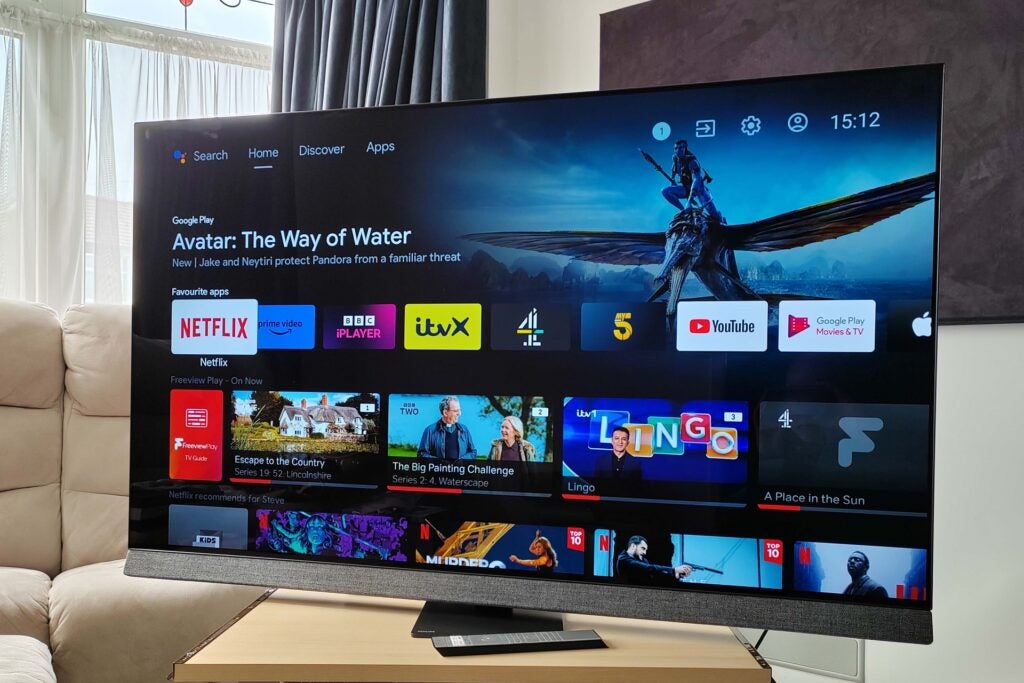
Philips 55OLED+907
Best Philips OLED TV
Pros
- Three-sided Ambilight
- 4K 120HZ support
- Stylish design
Cons
- Only two inputs support 120Hz
- Stereophonic sound system
We’ve not yet tested the OLED+908, but in the meantime, we would still rate the Philips OLED+907 as an excellent choice for TV and film fans and gamers.
It looks chic with its ultra-thin bezel, metal swivel stand finished in satin chrome and cloth-clad Bowers & Wilkins sound system. Connectivity includes four HDMI inputs, two of which are compliant with 4K/120Hz for premium game performance. One of those inputs is shared with the eARC port, so if you do decide to add a sound system, that reduces the number of viable 4K/120Hz inputs.
Smarts are provided by Android TV 11, which brings in built-in Chromecast and Google Assistant support. App selection is huge thanks to access to Google Play Store, while Freeview Play brings the UK catch-up and on-demand apps. One aspect to consider of the newer OLED+908 is that the latest model supports Google TV but doesn’t yet support Freeview Play.
Ambilight is provided in its three-side form and our reviewer is a big fan of the bias-lighting feature, as it can really add to a room’s ambience in a way no other TV brand can.
Image quality is superb. The 55OLED+907 features a tweaked OLED EX panel from LG Display that’s been given the ‘Royale’ designation by Philips. We measured brightness on a 10% HDR window at 1146 nits, and that level of brightness produces an impressive contrast performance with OLED’s naturally deep blacks meshing well with the bright highlights Philips’ processing can draw out.
The Crystal View setting puts in a performance that’s vibrant and solid, elevating any content watched in the format. We’d advised some caution with its motion settings. Pure Cinema is the best for the most natural motion in our opinion.
Audio quality impresses too, although there is no Dolby Atmos support from this integrated 3.1 sound system. Despite that there’s power, weight and a fine sense of detail provided for a TV audio system. It’s certainly a step up on the LG OLED65G3.
Reviewer: Steve May
Full Review: Philips 55OLED+907
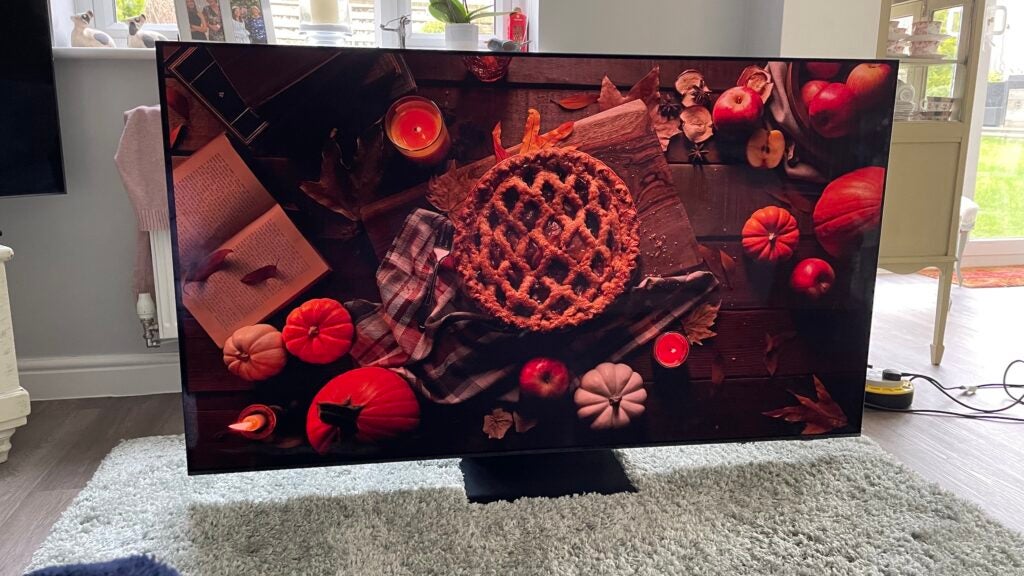
Samsung QE65S95C
Best Samsung OLED TV
Pros
- Stunning, ground-breaking picture quality
- Gorgeous Infinity One design
- Outstanding gaming support
Cons
- No Dolby Vision
- Expensive even by OLED standards
- Smart interface can be unhelpful
While we found Samsung’s S95B QD-OLED to impress in a number of ways, as an all-round package it didn’t quite convince us it was better than Sony’s more expensive A95K. At the second time of asking, Samsung’s unlocked more of the potential within its QD-OLED TV in the S95C.
The S95C continues on from where the S95B left off, our reviewer found it offered a brighter, more colourful and all-round more refined picture quality than before. Black levels and contrast are stunning for an OLED screen, the new filter on the screen reduces the issue with its predecessor whereby black levels could look less than strong. Brightness has been pushed up to as high as 1400 nits, feeding into a spectacular-looking picture performance with colours that are both fantastically vibrant and gorgeously subtle, revealing the natural shades in an image that previous OLED technology has struggled to find.
The screen itself is an ultra-slim effort thanks to the One Connect box. It holds all the TV’s processing, connections and is also able to power the TV. It helps reduce the clutter around the TV’s rear, and it also make for a neater installation if you decide to wall mount the screen.
In terms of features, the S95C is a more than capable gaming screen. We measured input lag at a rapid 9.2ms, and all HDMI inputs are certified to HDMI 2.1, with support for VRR and High Frame Rates up to 144Hz.
There’s no Dolby Vision, which continues to be a glaring omission in our minds, with the S95C supporting just HDR10, HLG and HDR10+ (along with the HGiG standard for gaming). The sound quality of the S95C’s speakers is also greater than we remember from the S95B, producing a bigger soundstage and better bass. The OTS sound system cleverly helps position sound effects in the right position on screen, and dialogue is placed with unerring accuracy as well.
The S95C will face increased competition from the LG G3 OLED and Sony A95L QD-OLED but at the time of writing the S95C is one of the best TVs in recent years, and sets a strong marker for the rest to hit.
Reviewer: John Archer
Full Review: Samsung S95C OLED

LG OLED65G3
Best LG OLED TV
Pros
- Spectacularly bright HDR image
- Minimalist looks
- Excellent gaming features
- Slick user interface
Cons
- Perfunctory Atmos sound
- Ever so slight green tint to pictures
- Stand is optional extra
While the G3 OLED isn’t perfect, when it comes to its picture quality it is a step up on the G2 OLED, although that comes with some caveats.
This screen features LG Display’s MLA OLED panel, and that boosts brightness by a huge amount of the G2 OLED. Peak brightness hits 1340 nits, which makes this one of the brighest HDR performances we’ve seen from any OLED TV. Average brightness is better than the Sony A95K, with brighter white tones and skin tones that punchy but refrain from the red push seen on Sony’s model. It’s capable of an excellent, three-dimensional 4K HDR image; although we’ve noticed from time to time a green tint to images that looks unnatural to us.
The TruMotion processing has seen improvements again for a natural performance with fewer artefacts, though to our eyes it’s still short of Sony’s class-leading models. Upscaling brings a significant boost to 480p and 1080p content, with terrific contrast, high levels of detail, clarity, and sharpness without seeming artificial or unnatural.
The audio performance is an area we found to be worse than the previous year’s modes. The AI Sound Pro mode is good with Dolby Atmos tracks, making for a wider, sharper presentation but it’s not a true Atmos delivery With non-Atmos content, the Standard or Cinema presets are smoother and more energetic in the performance they deliver. TVs like the Sony A80L and Panasonic MZ1500 are capable of a much more confident audio performance.
WebOS is home to Freeview Play and all the UK catch-up and on-demand apps, with plenty of other choices from video to sports and music to choose from, although you will need an LG account to unlock access to all apps.
Gaming has always been a strength of LG’s OLEDs and as usual there is support for 4K/120Hz, VRR and ALLM across all the HDMI inputs. We measured latency at 12.9ms, and with VRR technologies such as HDMI VRR, AMD FreeSync Pro and Nvidia G-Sync, that can be further reduced.
Reviewer: Kob Monney
Full Review: LG OLED65G3

Hisense 65A9HTUK
Best Hisense OLED TV
Pros
- Bright and colourful images
- Sound system is a blast
- High-end gaming features
- Simple interface
- Well-built
Cons
- Only available in 65-inch for UK market
- Picture processing has heavy touch
- Ultra Smooth Motion setting could use some refinement
- Competition is excellent
Hisense doesn’t launch very many OLED TVs, but its A9H is one that we think you should give consideration to, especially around the £1500 / $1500 price point.
The UK only gets the 65-inch model, and in terms of build quality this is a TV is very robust, and though assembling it is fairly simple, it does take a while to attach the stand. It’s built to a higher standard than we remember other flagship Hisense TVs being built to.
The VIDAA interface keeps things simple, which we like, and all big streaming apps are catered for in Netflix, Disney+, Prime Video, YouTube and Apple TV+. VIDAA Free gathers titles from free services such as Plex, Pluto TV and VIDAA TV. Freeview Play adds the UK catch and on-demand apps.
There are advanced features for gamers, such as AMD FreeSync Premium VRR for PC, and Dolby Vision Game mode for Xbox Series consoles. We measured latency at 14.9ms, which is around the same performance as the Panasonic MZ1500.
Of the four HDMI inputs, two cover the 2.1 standard. Auto low latency mode is across all inputs; HDMI VRR and 120Hz are available on the HDMI 2.1 ports. Note that one of the 2.1 inputs supports eARC, which mans if you plug in a sound system, that leaves just one input available for another 2.1 source. Hisense’s HDR support covers Dolby Vision IQ, HDR10+ certification, IMAX Enhanced and Filmmaker mode.
The picture performance is reminiscent of Philips TVs from a few years back in that the A9H’s picture processing can be very heavy handed. In its Dolby Vision IQ mode, everything from colours, brightness, detail and sharpness is amplified to the nth degree. Brightness can reach over 1000 nits, though in its Standard mode it’s closer to 700 nits.
There are elements of banding and contouring that we noticed with content, but the Hisense is capable of a lovely looking picture performance.
The audio performance is very good, one of the best we’ve heard from an OLED TV. Bass is big, there’s depth to the soundstage, as well as fine levels of detail and sharpness.
FAQs
OLED stands for Organic Light Emitting Diode. Each pixel is self-emissive, which means it can produce its own light. This produces high levels of contrast as a pixel that’s ‘on’ can sit next to a pixel that’s ‘off’. This also helps to deliver the deepest black levels in the TV world, wide viewing angles and excellent, vivid contrast levels.
Absolutely. There’s no type of TV that offers quite the same contrast, black levels and viewing angles. For brightness it is bested, but you’ll still need to pay as much to get that level of HDR brightness. And while burn-in/image retention is an issue, it’s not something you’d encounter with the precautions manufacturers have taken.
OLEDs are one of the best displays for gaming with LG’s OLEDs supporting every form of Variable Refresh Rate (VRR) for smoother gameplay and faster response times, High Frame Rate (4K/120Hz) and low latency gaming, with input times less than 10ms. Panasonic will be jumping into the gaming fray with their 2021 OLED TV range, too.



